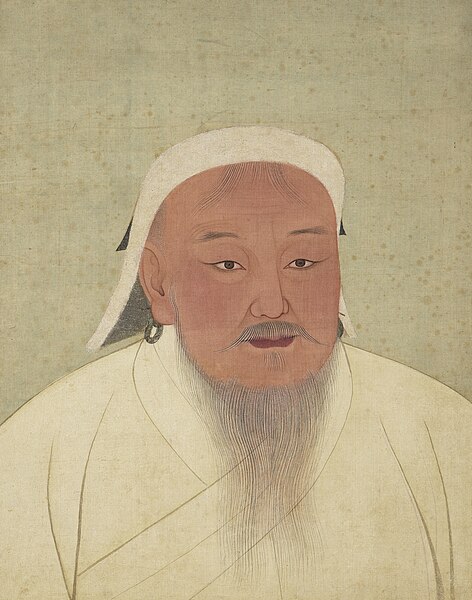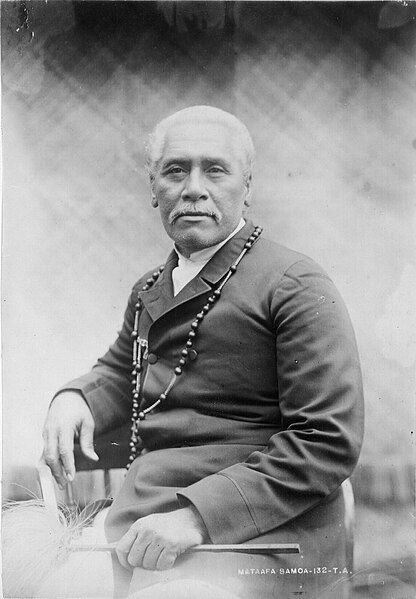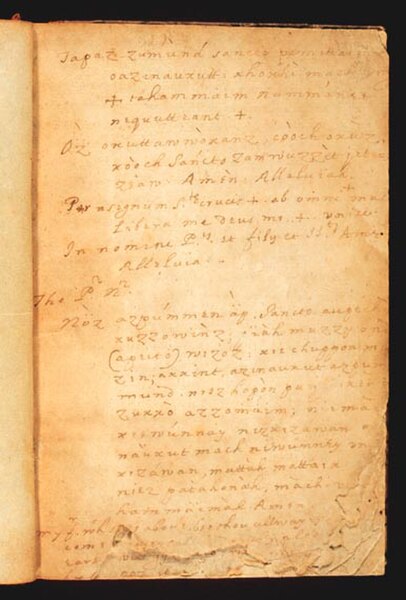A paramount chief is the English-language designation for the highest-level political leader in a regional or local polity or country administered politically with a chief-based system. This term is used occasionally in anthropological and archaeological theory to refer to the rulers of multiple chiefdoms or the rulers of exceptionally powerful chiefdoms that have subordinated others. Paramount chiefs were identified by English-speakers as existing in Native American confederacies and regional chiefdoms, such as the Powhatan Confederacy and Piscataway Native Americans encountered by European colonists in the Chesapeake Bay region of North America.
The Great Mongol Khan: Genghis Khan
Manchu Tribal Chief Nurhaci
The current Huguan Siou.
Samoan paramount chief Mata'afa Iosefo (1832–1912)
The Piscataway or Piscatawa, are Native Americans. They spoke Algonquian Piscataway, a dialect of Nanticoke. One of their neighboring tribes, with whom they merged after a massive decline of population following two centuries of interactions with European settlers, called them the Conoy.
The three Piscataway tribal leaders representing the Piscataway Indian Nation and Tayac Territory, Piscataway-Conoy Tribe of Maryland, and Cedarville Band of Piscataway received official recognition as tribes from the State of Maryland in 2012. Maryland Governor Martin O'Malley is 2nd from right.
Catholic Catechism prayers handwritten in the Piscataway, Latin, and English languages by a Catholic missionary to the Piscataway tribe, Andrew White, SJ, ca. 1634–1640. Lauinger Library, Georgetown University
The Cedarville Band, Wild Turkey Clan, of the Piscataway Conoy Nation, at the 2012 recognition ceremony held in Annapolis, Maryland.







